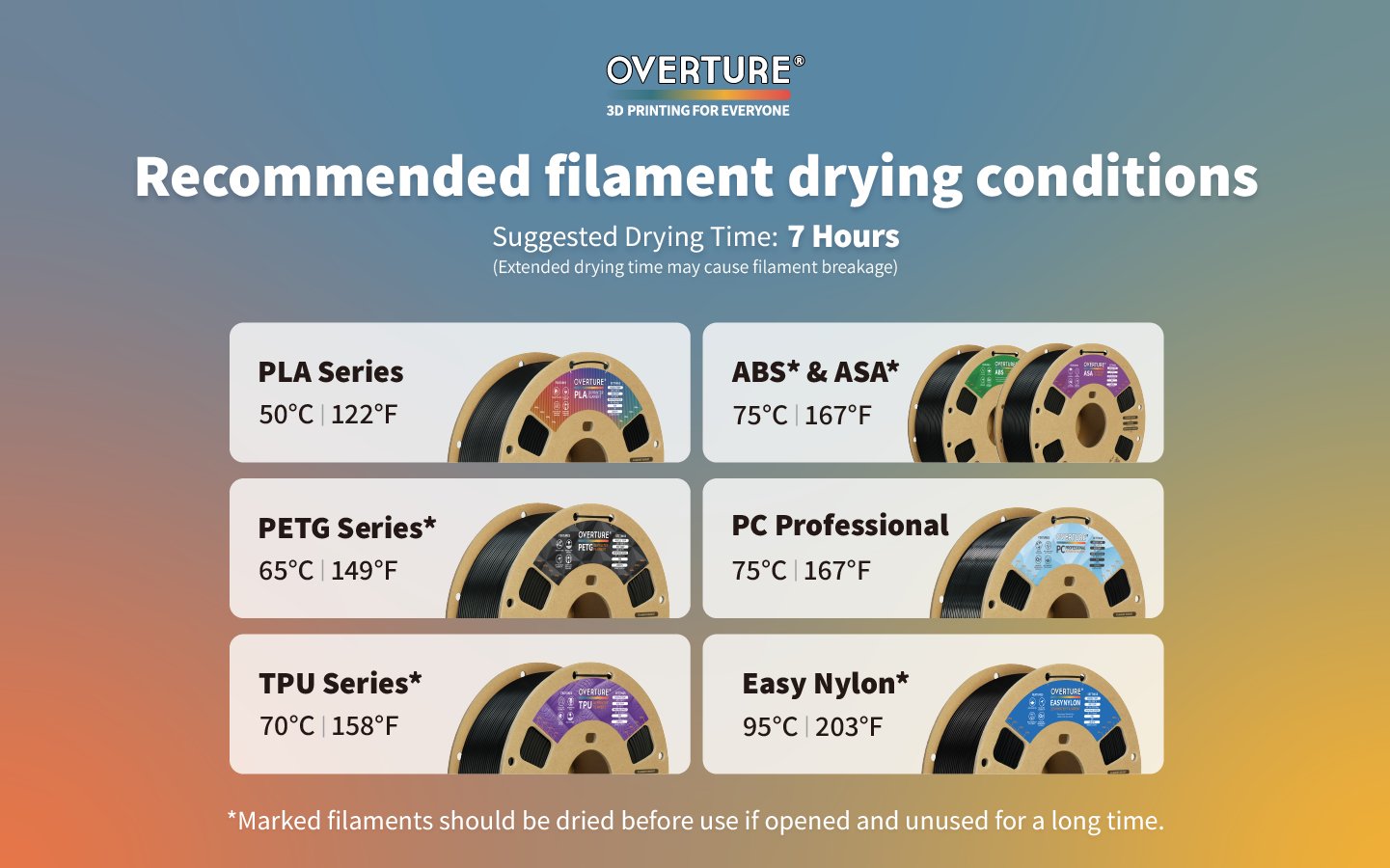This article provides essential information on the importance of drying filament before use, especially for moisture-sensitive materials. It outlines the signs of moisture-related issues and offers drying recommendations to help ensure optimal 3D printing results. Read on to learn how to keep your filaments in top condition for successful prints.
When to Dry
- Specific products should be dried before printing when opend and not used for a long time, especially PETG, TPU, ASA and Nylon.
- Bubbles and Hissing: If you hear hissing or see bubbles while printing, the filament is likely wet.
- Surface Defects: Stripes or rough textures on your print mean moisture is present.
- Warping: If the print warps or distorts, it may be due to damp filament.
- Weakness: If the prints seem weaker, moisture may be the cause.
- Poor Layer Adhesion: If layers don’t stick well, the filament might be wet.
- Stringing: If you notice stringing between parts during printing, this can be a sign of moisture in the filament.
- Blobs on Extruded Filament: If blobs form on the filament as it is extruded, this may indicate that the filament is wet.
Recommended Drying Conditions
| Filament Type | Temp (℃) | Temp (℉) | Duration |
| PLA series | 50 | 122 | 7 hours |
| PETG series | 65 | 149 | 7 hours |
| TPU series | 70 | 158 | 7 hours |
| ABS/ASA | 75 | 167 | 7 hours |
| PC Professional | 75 | 167 | 7 hours |
| Easy Nylon | 95 | 203 | 7 hours |
*Bold filaments are recommended to be dried before use if opened and not used for a long time.
Important Reminder
- After drying your filaments, it's crucial to store them in conditions that prevent moisture uptake.
- Avoid extended drying times, as this can lead to the filament becoming brittle and unsuitable for printing.
If you have any questions or need additional information about drying and storing your filaments, please reach out to our support team through our contact form: Contact Us.





